GN ready to slide into modest deficit
Finance Minister Lorne Kusugak says more money to be devoted to Elders, housing, health, education
What it means to be an Elder ᖃᓄᖅ ᑐᑭᖃᖅᐸ ᐃᓐᓇᐅᓗᓂ

Enterprising athletes
ᑕᐃᓇ ᐃᒍᑕᖅ ᐃᒃᐸᑯᕼᐊᒃ, ᐃᓚᒋᔭᐅᔪᖅ ᐃᖃᓗᒃᑑᑦᑎᐊᒥ ᐹᔩᑦ ᑕᑯᒃᓴᐅᑎᑦᑎᔪᑦ ᓇᓄᕐᓂᒃ ᓴᓇᙳᐊᕐᓂᕐᒥᒃ ᐊᑭᑦᑐᕋᐅᑎᓂᒃᑯᑦ 2023-ᒥ ᕿᑎᕐᒥᐅᑦ ᑕᑯᒃᓴᐅᑎᑦᑎᑎᓪᓗᒋᑦ. ᐊᑭᑦᑐᕋᐅᑎᓂᖅ $39,450-ᓂᒃ ᑮᓇᐅᔭᓂᒃ

Rankin Inlet wrestles with effects of beer and wine store

Feasting on readers’ pictures
carving up for auction at the 2023 Kitikmeot Trade Show. The auction raised $39,450. Navalik Tologanak/NNSL photo

Idlout,

ᐱᕈᖅᑎᑦᑎᓚᐅᖅᑐᖅ.
NDP attack government over housing
Respecting Elders important in Inuit culture, Quassa says Being
an Elder more than just reaching a certain age
By Trevor Wright Northern News Services Iqaluit













It’s important to respect your Elders in Inuit culture, said Iqaluit Coun. Paul Quassa.
“Elders are knowledge-holders and that’s why it’s so very important. It’s very attached to our culture that you respect your Elders,” he said. “They’ve lived longer, they’ve experienced more life than you.”
Now in his 70s, Quassa remembered when he was young and Elders’ names were not even used.

“We were just allowed to say either Ittuq or Ataatasiaq. You don’t say their name because of respect. That’s how much respect we had for our Elders,” he explained. “I was told whenever you go to a camp, if there’s an Elder that’s the first one you go visit. Just to go see and say hi and that’s about it — at least see them.”
Quassa, former Nunavut premier and former
Nunavut Tunngavik Incorporated president, hopes future generations learn the cultural values Elders have as knowledge-holders.
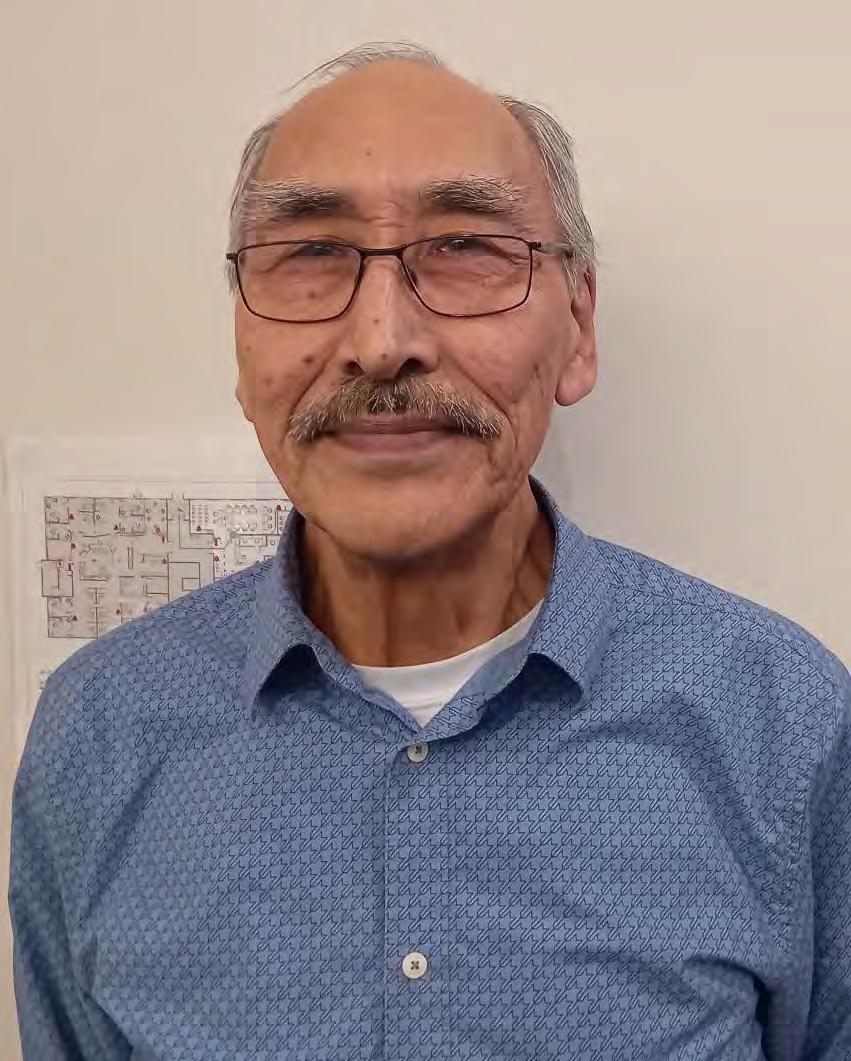
“An Elder’s an Elder, whether it’s a woman or a man. It’s being respectful because of their experience,” he said.

While Quassa agreed that 60 and above is a good number to be considered an Elder, he added those metrics weren’t always used to measure such criteria.
“In the olden days we didn’t have numbers to say, this old you’re an Elder now. It was the facial expression, the physical being of being an Elder — it’s how you see them rather than looking at it as a number.
“An Elder in a community may not necessarily be a leader but a respected Elder,” he said, stressing the importance of holding Elders in high regard.
“I encourage all Nunavummiut to respect the social values of Inuit, which is respecting our Elders at all times.”
Nunavut continues to seek more federal healthcare funding
Territories ask for increase to Territorial Healthcare Investment Fund
By Trevor Wright Northern News Services IqaluitNegotiations between the federal government and the territories on healthcare funding continues, said Nunavut Premier P.J. Akeeagok, who welcomed federal Intergovernmental Affairs and Infrastructure Minister Dominic Leblanc and Health Minister Jean-Yves Declos to Iqaluit on Feb. 15.

Joining the discussions were Nunavut Health Minister John Main and Finance Minister Lorne Kusugak.
“This meeting leaves us encouraged,” said Akeeagok in a statement the next day. “Still, as we progress towards negotiations on the Canada Health Transfer and other bilateral agreements for health funds, I must highlight
a need for investments through the Territorial Health Investment Fund (THIF).”
Nunavut is reliant on continued federal investment to offset higher costs of delivering healthcare services in the territory.
Nunavut’s allocation of THIF has long stood at 50 per cent, currently $13.5 million annually.
Alongside the NWT and Yukon, Nunavut has asked Prime Minister Justin Trudeau to reconsider a proposal put forward last November to set the fund to $75 million per year — 50 per cent for Nunavut, 26 per cent for NWT and 24 per cent for Yukon.
“All Canadian premiers recognize the unique circumstances of the territories and have expressed strong support for providing enhanced territorial fiscal certainty,” said Akeeagok.
ᒥᓂᔅᑕᖓ ᔮᓐ ᒪᐃᓐ ᐊᒻᒪ ᒥᓂᔅᑕᐅᑉ ᑐᒡᓕᐊ ᒐᕙᒪᓕᕆᔨᒃᑯᓐᓄᑦ ᔨᒥ ᐅᓈᓕᒃ ᑲᑎᒪᖃᑎᖃᓚᐅᖅᐳᖅ ᑲᓇᑕᒥ ᒥᓂᔅᑕᓂᒃ ᐅᓄᖅᓯᒋᐊᕈᑎᒃᓴᓂᒃ ᐋᓐᓂᐊᖃᕐᓇᙱᑦᑐᓕᕆᓂᕐᒧᑦ ᑮᓇᐅᔭᓂᒃ ᓄᓇᕗᒻᒧᑦ.
GN prepared to enter deficit to further address lingering issues in housing, health
Finance Minister admits that recruiting staff among biggest challenges, and money isn’t the only answer
By Trevor Wright Northern News Services NunavutThe Government of Nunavut is projecting an $8 million deficit in the $2.8-billion 2023-24 budget unveiled Thursday, if the $50 million set aside for contingencies is spent.
Total expected revenues, mainly through federal transfers, are down by $202 million from the previous budget. The decrease mainly stemmed from the lack of extraordinary onetime Covid-19 relief funds, marking a return to the norm for the budget.
“All of our other own-source revenues have actually increased — we just had so much Covid funding last year,” said Daniel Young, assistant deputy minister of Finance.
Total spending is expected to hit $2.79 billion this year.
The GN is looking to continue building on its Katujjiluta Mandate through its latest financial plan.
“I think last year’s (budget) was a good beginning to get caught up in some of the infrastructure that is badly needed in our communities,” said Finance Minister Lorne Kusugak.
He added that the government is “spending a lot of money over the next fiscal years,” starting with this one. The GN will be building more houses, putting more financial resources into healthcare for Nunavummiut “and working on bringing our Elders home.”
In tackling the Katujjiluta Mandate, the GN is prepared to incur a modest deficit to try to address Nunavut’s problems surrounding Elders, housing, education and healthcare.
“Last year we gave warnings we would get into a deficit situation, which means taking
money from (the) previous year’s surplus and that’s exactly the street we’re going down,” said Kusugak.
When comparing it to prior budgets, the minister said “the main difference is we’re putting a lot of money into housing and into taking care of our Elders and better healthcare across the territory.
“We have old health centres but when we don’t have the capacity to fill those positions, people’s lives are at risk,” he added.
Negotiations between the federal government and the three territories on increasing the Territorial Healthcare Investment Fund are ongoing. An ideal outcome, according to Kusugak, would be for Nunavut to get more money.
He deferred to the Department of Health on whether more funding will help attract more healthcare workers to the territory.
“Sometimes money will help solve some of those issues, but sometimes it doesn’t,” said Kusugak. “There was a time in the North where recruitment wasn’t a big problem. We were the place to go and adventure, being nurses and teachers in these little isolated communities. That is gone and we’re now struggling to keep up with the demand.
“The world has become very competitive in hiring, more so since Covid,” Kusugak continued. “People have decided they don’t want to be so far away from home, wherever that may be, more often than not, home isn’t Nunavut.”
The Finance minister also stood by the government’s goal to build 1,000 new housing units by the end of its mandate. This will require continued investment, which includes plans to train 80 Inuit in construction through 2023 and continued partnerships with NCC Development to fulfill up to two-thirds of the
Nunavut 3000 plan.
Construction projects
In terms of larger capital projects, the 24bed long-term care facility in Rankin Inlet is in position to receive an additional $12 million in its third year of construction. More than $59 million has been committed to that facility overall.
Another construction project in line for a substantial financial injection is the Nunavut Recovery Centre, with $15.5 million set aside in 2023-24.
A planned fibre optic line to the territory
will make use of $14.1 million to get construction started.
Last year, due to changes on the federal government’s pricing rules on the carbon tax, Nunavut cancelled the Nunavut Carbon Rebate Program. To address this, the GN is currently proposing amendments to the Income Tax Act to introduce a Nunavut Carbon Credit, which will use dollars obtained from the carbon tax for a direct cash payment to Nunavummiut every three months. This will be offered alongside a homeowner fuel rebate to help manage the higher cost of heating homes.
BUDGET HIGHLIGHTS: 2023-2024
-$17.5 million to continue the development of the Government’s Enterprise Resource Planning software system
-$12 million in cash payments to Nunavummiut to offset higher costs associated with the carbon tax
-$7 million increase for income assistance to provide inflation relief
-$6.2 million budget increase for local housing authorities to operate and maintain new units
-$5 million in mental health supports for Nunavut students
-$3.4 million for the Coalition of Nunavut District Education Authorities
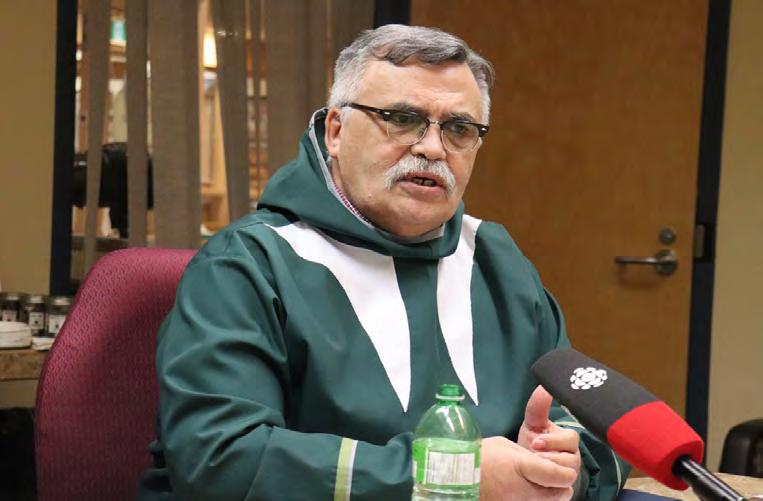
-$3 million for security services in health centres
-$2.2 million to implement a virtual nurse practitioner program and online clinics
-$2.8 million to increase RCMP members in several communities over two years
-$230,000 to expand the Nursing Resource Program
-$2.1 million in additional funding to support the Qikiqtani General Hospital and other Nunavut health centres
-$881,000 for the territory’s chief nursing and midwifery office to address nursing and midwifery needs
-Close to $1 million to create new radiology and laboratory clerk positions
-$350,000 to expand the health information unit that oversees, protects and manages health data of Nunavut residents
-An additional $500,000 to increasing the victims’ services fund
-$700,000 in capital for heritage facilities, including $500,000 for public libraries
Source: Government of Nunavut
Out and about at the Kitikmeot Trade Show

The Kitikmeot Trade Show returned Feb. 15 to 17, marking the first time Cambridge Bay hosted the long-running event since prior to the Covid-19 pandemic. Scores of booths were set up and staffed by various businesses and organizations at the Kiilinik High School gymnasium, allowing for widespread interaction.
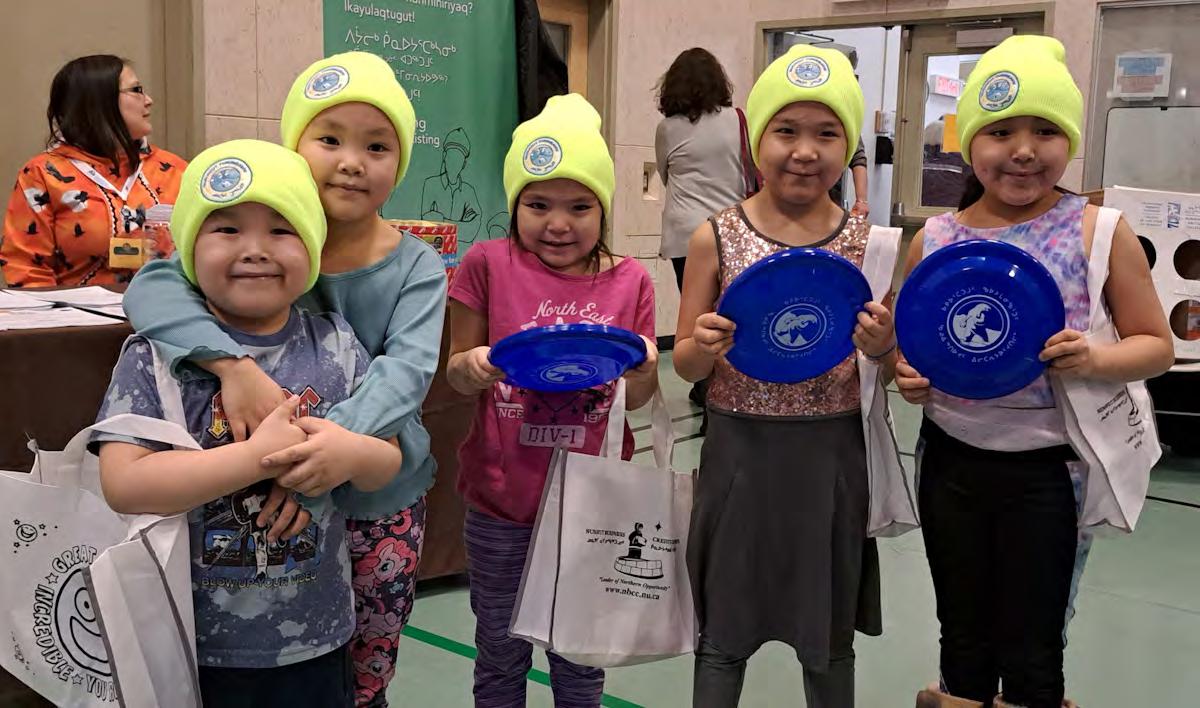


ᐊᓐᓄᕌᑦ ᐊᒥᓱᕈᖅᐸᓪᓕᐊᕗᑦ ᑖᒃᑯᐊ ᐃᓄᐃᑦ ᐊᕐᓇᑦᑎᐊᕙᐃᑦ ᐊᑐᖅᑐᑎᒃ ᑲᓕᒍᕐᓂᒃ ᐊᒻᒪ ᐊᓈᓇᒃᑯᕕᓐᓂᑦ. ᓴᐅᒥᐊᓂ, ᐄᕙ ᒍᕇᓐᓕ, ᓴᐃᓃᔅ ᑯᑉᑖᓇ, ᑭᐊᓐᑐᓪ ᑭᕝᒐᓗᒃ ᐊᒃᓇᕕᒐᖅ ᐊᒻᒪ ᑖᒥ ᐅᒥᓪᒍᐃᑦᑐᖅ.
ᑕᑯᒥᓇᕐᓂᖅᐹᖑᖏᓐᓇᐅᔭᖅᑐᖅ. ᐅᕝᕙ ᕉᓯ ᓂᒡᓚᒃ ᐃᖃᓗᒃᑑᑦᑎᐊᕐᒥᐅᑕᖅ, ᓄᓇᕗᒻᒥ ᐊᓈᓇᑦᑎᐊᕚᓗᖕᒥ ᔭᐸᖃᑦᑎᐊᖅᑐᖅ.
ᐊᓈᓇᐅᔪᖓ, ᖁᕕᐊᓱᖃᑎᖃᖅᑐᖓ 2023-ᒥ ᕿᑎᕐᒥᐅᑦ ᑕᑯᒃᓴᐅᑎᑦᑎᑎᓪᓗᒋᑦ ᐃᖃᓗᒃᑑᑦᑎᐊᒥ, ᓄᓇᕗᒻᒥ. ᓴᐅᒥᐊᓂ 5-ᓂᒃ ᐅᑭᐅᓕᒃ
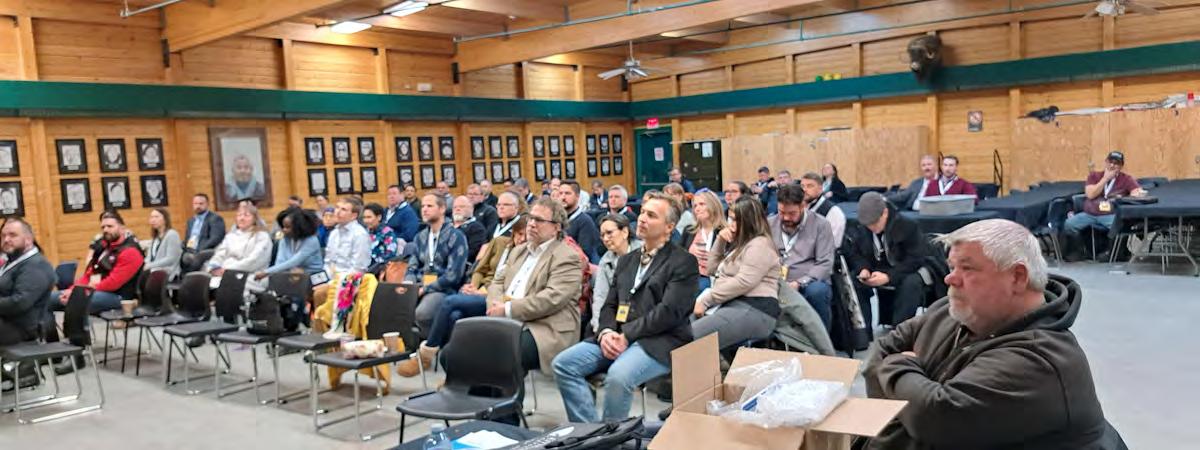
ᓯᐅᑕᓐ ᕌᔅ ᑎᒃᕼᐊᒃ ᓇᔭᖓᓗ 7-ᓂᒃ ᐅᑭᐅᓕᒃ ᕕᐅᕋ ᔩᓐ ᑎᒃᕼᐊᒃ, ᑕᓪᓕᒪᓂᒃ ᐅᑭᐅᓕᒃ ᑎᓚᓂ ᐊᖒᕼᐃᐊᑐᒃ ᐃᕙᑕᒐᖅ, 7-ᓂᒃ
ᐅᑭᐅᓕᒃ ᐄᕙ ᒪᐃ ᐃᕙᑕᓕᒐᖅ ᐊᒻᒪ 8-ᓂᒃ ᐅᑭᐅᓕᒃ ᐊᐃᕕᑕ ᕉᔅ ᐅᕼᐅᑭᓗᒃ ᐅᕼᐅᓇ.
ᐊᔾᔨᐅᙱᑦᑐᒥᑦ ᐅᓂᒃᑳᖅᑐᖃᓚᐅᖅᑐᖅ ᑲᓐᕋᑦ ᑎᒃᔅᒥᑦ ᐊᒡᓃᑯ ᐄᒍ ᐅᔭᕋᓐᓂᐊᑎᒃᑯᓐᓂᑦ ᐊᓂᖏᓐᓄᑦ ᔮᓐ ᕼᐊᓂᓕᐊᖅ ᐊᒻᒪ ᕌᐳᑦ ᐋᑯᓗᒃ ᕿᖓᐅᑦ, ᑭᖓᐅᑦ, ᐊᕐᕌᒍᒐᓴᖕᓄᑦ ᐱᔨᑦᑎᕋᖅᓯᒪᓂᖏᓐᓄᑦ ᐅᔭᕋᖕᓂᐊᕐᕕᖕᓄᑦ.
ᓄᓇᕗᒻᒥ.
ᑖᒥ ᐅᒥᓪᒍᐃᑐᕐᒧᑦ, ᐅᑕᖅᑭᓪᓗᑎᒃ ᓂᕆᔭᖅᑐᖅᑐᓂᒃ ᒥᖅᓱᒐᕐᓂᒃ, ᐅᖃᓕᒫᒐᕐᓂᒃ, ᐊᓯᖏᓐᓂᒡᓗ. ᓂᐅᕕᕐᓂᐊᕐᓗᓂ, ᑐᓴᒐᒃᓴᑦᑎᐊᕙᐃᑦ ᐅᕙᓂ.
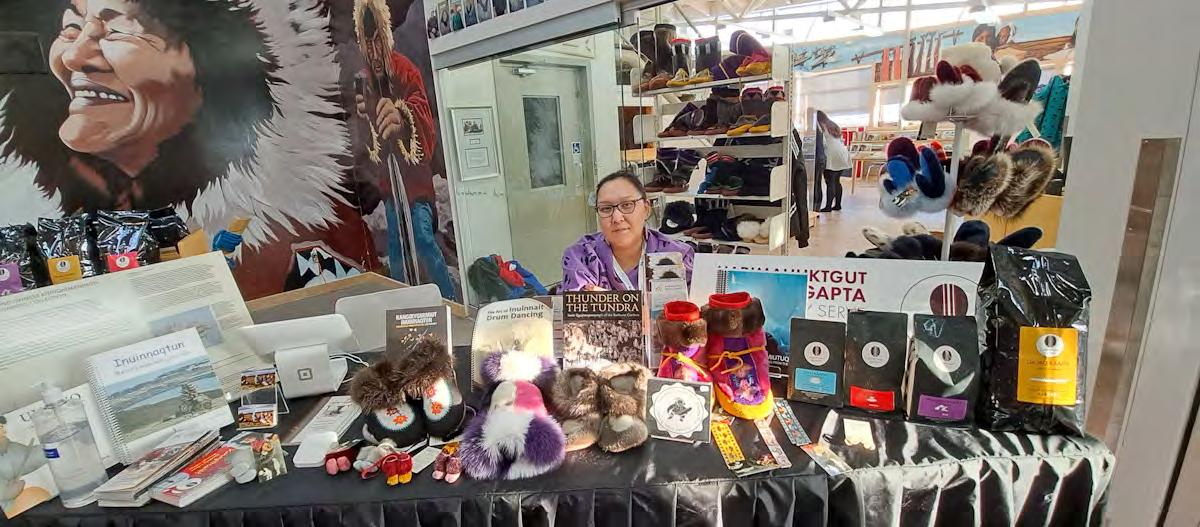
ᑕᐃᓇ ᐃᒍᑕᖅ ᐃᒃᐸᑯᕼᐊᒃ, ᐃᓚᒋᔭᐅᔪᖅ ᐃᖃᓗᒃᑑᑦᑎᐊᒥ ᐹᔩᑦ ᑕᑯᒃᓴᐅᑎᑦᑎᔪᑦ ᓇᓄᕐᓂᒃ ᓴᓇᙳᐊᕐᓂᕐᒥᒃ ᐊᑭᑦᑐᕋᐅᑎᓂᒃᑯᑦ 2023-ᒥ ᕿᑎᕐᒥᐅᑦ ᑕᑯᒃᓴᐅᑎᑦᑎᑎᓪᓗᒋᑦ. ᐊᑭᑦᑐᕋᐅᑎᓂᖅ $39,450-ᓂᒃ ᑮᓇᐅᔭᓂᒃ ᐱᕈᖅᑎᑦᑎᓚᐅᖅᑐᖅ.
ᑖᑦ ᓴᐃᓕ, ᑲᓇᐃᑎᐊᓐ ᓄᐊᑦ ᑐᑭᒧᐊᒃᑎᑦᑎᔨ ᐅᓯᔭᐅᔪᒃᓴᓄᑦ ᐊᒻᒪ ᓇᖕᒥᓂᖃᖅᑎᓄᑦ ᐱᕙᓪᓕᐊᓂᕐᒧᑦ ᐱᖃᑕᐅᓪᓗᑎᒃ ᓴᒫᓐᑕ ᓯᑑᐊᑦ, ᑲᓇᐃᑎᐊᓐ ᓄᐊᑦ ᐊᐅᓚᑦᑎᔨ ᓂᐅᕕᐊᒃᓴᓄᑦ ᐃᑲᔪᖅᓱᐃᓂᕐᒧᑦ ᐊᒻᒪ ᓄᓇᓕᖕᓂ ᑮᓇᐅᔭᓕᐅᕈᑕᐅᓇᓱᐊᖅᑐᓄᑦ ᑐᓴᖅᑎᑦᑎᓪᓗᑎᒃ ᓄᑖᒥᒃ ᐊᖅᑯᑎᒃᓴᒥᒃ ᐃᖃᓗᒃᑑᑦᑎᐊᒥ/ᐅᓗHᐊᒃᑐᖅ ᐱᖓᑦᓯᕐᒥ.

ᐲᑕ ᒫ, ᐊᐅᓚᑦᑎᔨᓪᓗᐊᑕᖅ ᓄᓇᕗᒻᒥ ᓇᖕᒥᓂᖃᖅᑐᓄᑦ ᐊᑐᖅᑐᐊᕐᕕᖕᒧᑦ 2023-ᒥ ᕿᑎᕐᒥᐅᓂ ᑕᑯᒃᓴᐅᑎᑦᑎᔪᓂᒃ, ᐅᖃᖃᑎᖃᖅᖢᓂ ᓯᑑᐊᑦ ᐊᒻᒪ ᐊᒫᓐᑕ ᕉᔅᑖᓐᑦ CHOU Consulting ᐊᒻᒪ Development Inc.−ᑯᓐᓂ, ᐅᑭᐅᖅᑕᖅᑐᒥ ᐃᒡᓗᑦᑎᐊᕙᓕᐅᓲᑦ.
ᑮᓇᐅᔭᖃᖅᑎᑦᑎᔪᖅ 2023-ᒥ ᕿᑎᕐᒥᐅᑦ ᐃᖅᑲᓇᐃᔮᓄᑦ ᑕᑯᒃᓴᐅᑎᑦᑎᓂᕐᒥᒃ ᓴᐅᒥᐊᓂ: ᔨᒻ ᒪᒃᕘᓐ, ᐊᐅᓚᑦᑎᔨᒻᒪᕆᒃ ᐃᖃᓗᒃᑑᑦᑎᐊᒥ; ᑳᑐᕋᓐ ᐃᑉ, ᕼᐋᒻᒪᓚᒃᑯᑦ ᐃᖃᓗᑦᑑᑦᑎᐊᕐᒥ; ᑲᒦᐅᓪ ᓚᐃᐅᓪ, ᐅᑭᐅᖅᑕᖅᑐᒥ ᖃᐅᔨᒪᔨᑕᑦ ᑲᓇᑕᒥ; ᐃᐅᕆᒃ ᔅᑏᓐᒥᓐᓱ, ᐊᒡᓃᑯ ᐄᒍᓪ ᐅᔭᕋᖕᓂᐊᕐᕕᒃ; ᓇᑖᓕᐊ ᐅᐊᔅᑦᕗᑦ, ᐱᕙᓪᓕᐊᔪᓕᕆᔨᒃᑯᑦ ᐃᖏᕐᕋᔪᓕᕆᔨᒃᑯᓪᓗ ᓄᓇᕗᑦ; ᑖᑦ ᓴᐃᓕ, ᑲᓇᐃᑎᐊᓐ ᓄᐊᑦ. ᐊᑐᓂ ᑐᓂᓯᔪᑦ ᐱᓚᐅᖅᑐᑦ ᐊᒡᒐᒧᑦ ᓴᓇᓯᒪᔪᓂᒃ ᓂᐱᐅᓯᖅᓯᒪᔪᓂᒃ ᐃᖃᓗᖕᓂᒃ ᓇᓗᓇᐃᒃᑯᑕᓂᒃ ᓴᓇᔭᐅᔪᓂᒃ ᓄᓇᓕᖓᑕ ᐃᖃᓗᒃᑑᑦᑎᐊᕐᒥ.
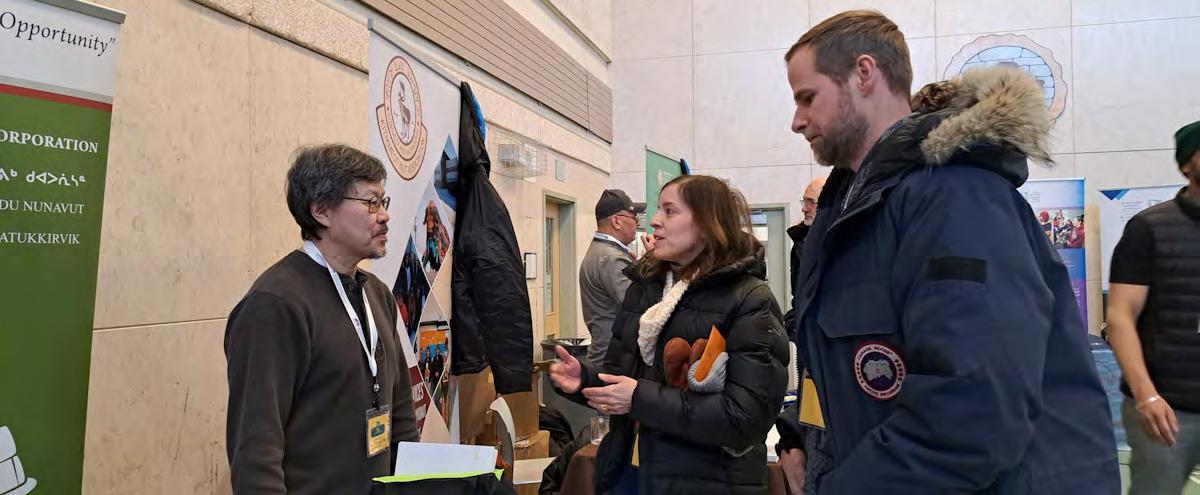


Sundogs and fish make multiple appearances among this week’s On-the-Land photos.

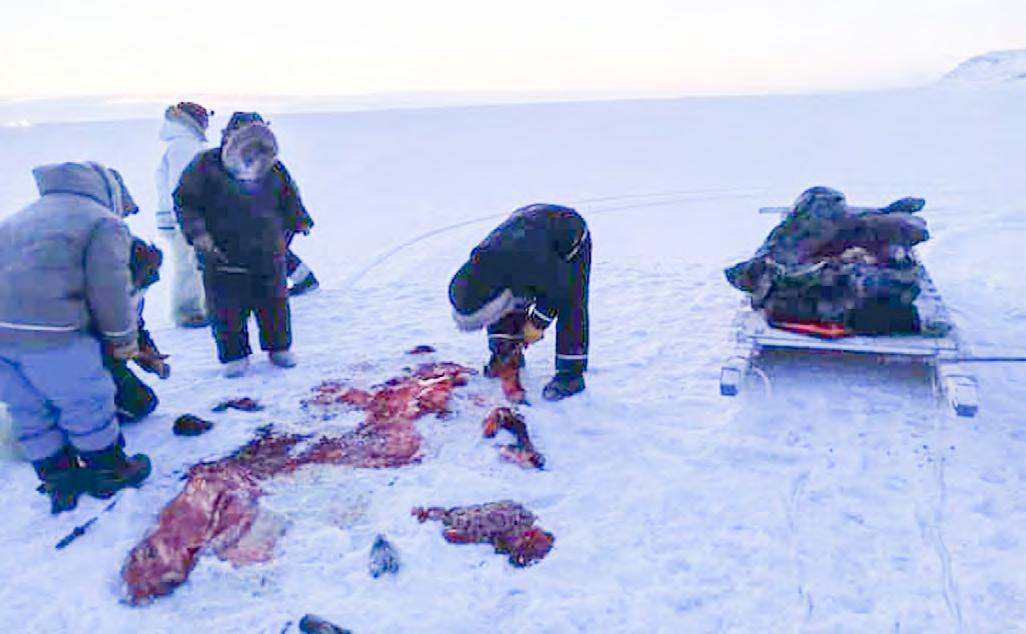
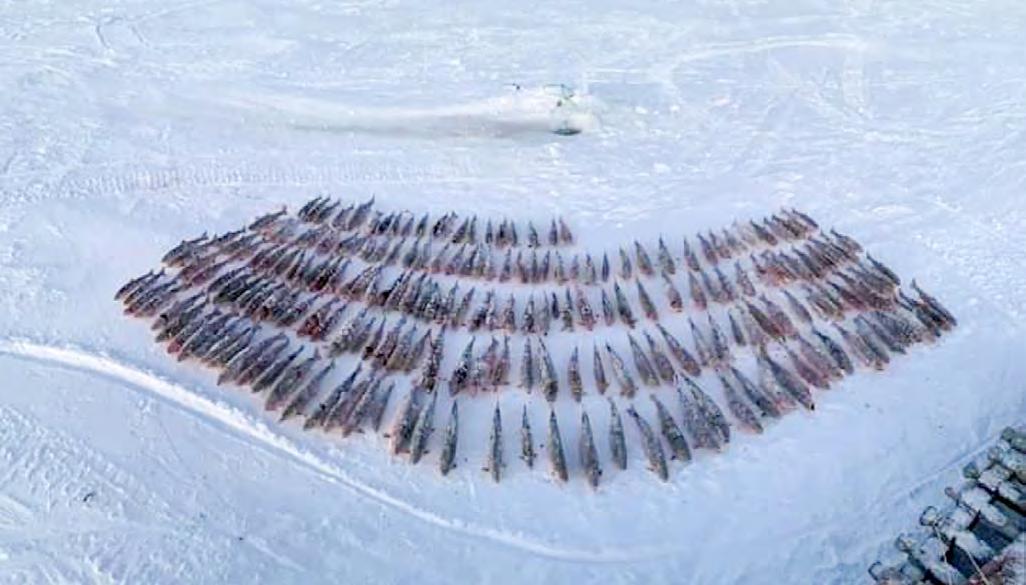



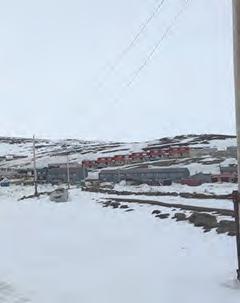
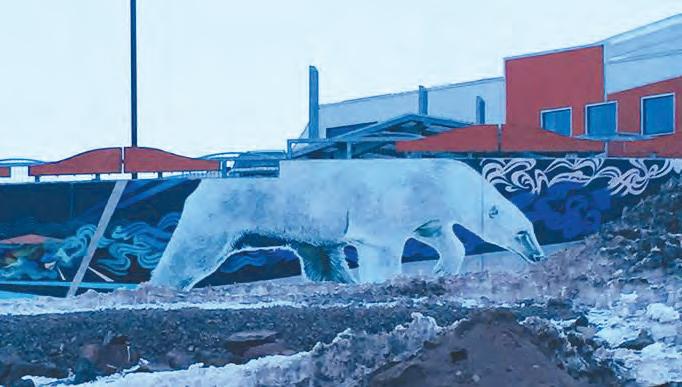
ᔭᐃᓴᓐ ᐅᐃᓕᐊᒻ ᐊᔾᔨᖁᑎᒥᒃ ᓇᒃᓯᐅᔾᔨᓚᐅᖅᐳᖅ ᑭᙵᕐᓂᑦ. ᕕᓕᐊᒻ, ᐋᓐᓂᐊᓯᐅᖅᑎ, ᑖᓐᓇ ᓇᖕᒥᓂᖅ− ᐅᓂᒃᑳᓚᐅᖅᑐᖅ ᕕᕗᐊᕆ 7-ᖑᑎᓪᓗᒍ. ᐅᓐᓄᒃᑯᑦ ᐊᐅᓚᑲᑦᑖᖃᑎᖃᓚᐅᖅᑐᖅ ᐱᖃᓐᓇᕆᔭᒥᓂᒃ ᐊᖅᓴᕐᓂᖅᑯᑦ ᐊᑖᓂ. ᐊᑐᕐᓂᑰᓗᓂ, ᓄᑕᕋᖅ ᓇᒃᓴᕐᓗᒍ.
ᓵᓐᑐᕋ ᐳᑐᒍᒃ ᓇᒃᓯᐅᔾᔨᓚᐅᖅᐳᖅ ᑖᔅᓱᒥᖓ ᐊᔾᔨᙳᐊᒥᒃ ᐱᔭᐅᓚᐅᖅᑐᒥᒃ ᐊᕐᕕᐊᓂ ᐃᖃᓗᒐᓱᒡᔪᐊᖅᑎᓪᓗᒋᑦ ᐅᓪᓗᖓᓂ, ᓵᓐᑐᕋ ᑕᓕᕆᒃᑐᖅ ᑎᒃᑕᐅᓪᓗᓂ ᐱᓪᓗᓂᓗ ᐆᒻᒪᑎᐅᑉ ᐳᔪᖓᓂᒃ.

ᔭᐃᓴᓐ ᓴᓪᓗᕕᓂᖅ ᓇᒃᓯᐅᔾᔨᓚᐅᖅᐳᖅ ᑖᔅᓱᒥᖓ ᐊᔾᔨᙳᐊᒥᒃ ᐃᖃᓗᖕᓂᙶᖅᑐᒥᒃ ᐊᕿᒡᒋᖅ ᐱᔭᐅᓪᓗᓂ ᐃᖃᓗᐃᑦ ᓯᓚᑖᓂ ᕕᕗᐊᕆ 10-ᖑᑎᓪᓗᒍ.

ᒫᑕᓕᓐ ᖁᒻᒧᐊᑦᑐᖅ ᑖᔅᓱᒥᖓ ᐊᔾᔨᙳᐊᒥᒃ ᐸᓐᓂᖅᑑᒦᙶᖅᑐᒥᒃ ᓇᒃᓯᐅᔾᔨᓚᐅᖅᐳᖅ.
ᒪᙳᕐᓗᑯᐃᑦ — sundog rainbow-ᒥᒃ ᐊᐳᑕᐃᔭᐃᔾᔪᑎᓖᑦ ᐱᔭᐅᓚᐅᖅᑐᑦ ᕕᕗᐊᕆ 10-ᒥ.


Madeleine Qumuatuq sent us this photo from Pangnirtung. Magic sprinkles — sundog rainbow with snow crystals taken on Feb. 10.
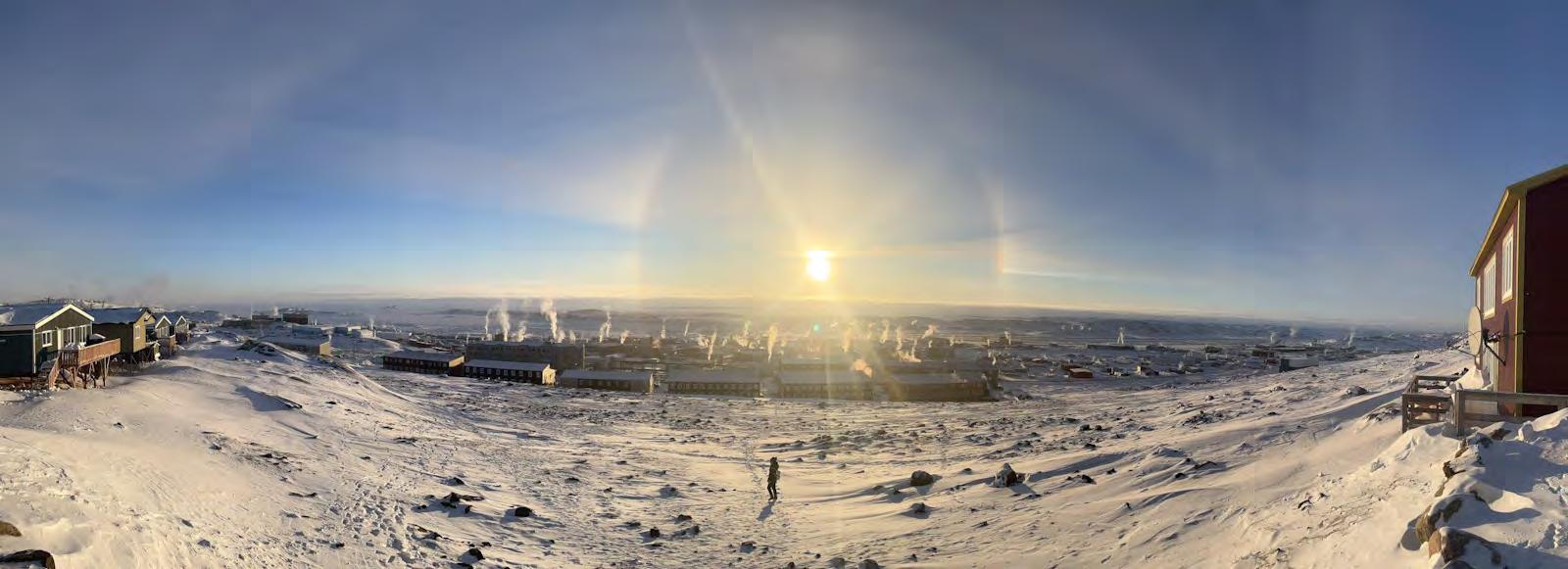

ᑖᓖᓐ ᓄᓗᒃ ᓇᒃᓯᐅᔾᔨᓚᐅᖅᐳᖅ ᑖᔅᓱᒥᖓ ᐊᔾᔨᙳᐊᒥᒃ ᓇᐅᔮᑦ ᖁᕐᓗᕐᓂᖓᓄᑦ ᐱᔭᐅᓚᐅᖅᓯᒪᔪᓂᒃ 2022−ᖑᑎᓪᓗᒍ.
ᐲᑕ
NDP slams Liberals for failing to close funding gap for Northern Indigenous communities
Overcrowding, mould, homes in disrepair among concerns
Ottawa is grossly underfunding Indigenous housing, the NDP says, adding it will take more than five decades to fix housing in First Nations communities at the current rate the federal government is investing.
Indigenous services critics Lori Idlout, MP for Nunavut, and Niki Ashton, MP for Churchill—Keewatinook, called out the Liberals at a press conference on Feb. 16, saying there is no way the government will be able to fulfil its promise to close the housing gap and provide adequate housing in Indigenous communities by 2030.
Ottawa’s current funding — $2.7 billion over the past seven years and an additional $4 billion over the next seven — is nowhere near enough, Ashton and Idlout said. Research by the Assembly of First Nations states First Nations will require $40 billion to address the current housing crisis by 2030, with another $16 billion to address future needs.
Indigenous communities were facing a housing crisis long before the rest of Canada, Ashton said in an interview, with the estimated number of homes needed on reserve between 35,000 and 85,000.
Ashton also described the state of housing in her own constituency as “akin to Third World living conditions.”
“We’re talking overcrowded homes, mould-infested homes, homes that are falling apart, people relying on tarps to close off parts of their home,” she added.
The waiting lists for on-reserve housing continue to grow, Ashton said. The numbers, which stretch into the hundreds for First Nations in her northern Manitoba riding, are a “clear reflection of the gap,” she said.
Under the current system, funding for on-reserve housing is disbursed to First Nations to build and renovate houses, as well as provide
maintenance, insurance, planning and management of the community’s housing needs.
Questioning loans
The NDP submitted two order paper questions regarding funding for First Nations: the first asked about how many loans were requested, disbursed and defaulted upon since 2015 the second asked how much housing funding was requested and delivered, and how many homes were ultimately built with that funding.
Half of the $2.7 billion spent on housing in Indigenous communities was awarded to specific housing projects as a one-time investment, out of which 2,049 of 3,000 projects were completed, according to the response to the order paper questions.
Another billion was committed through loan guarantees to cover for First Nations unable to repay housing loans.
Patty Hajdu, minister of Indigenous Services, said the government needs to have realistic time frames when it comes to getting money into communities. Since 2016, there has been $4 billion on the books for Indigenous housing but only $1.3 billion has been spent, she said.
Canada Mortgage and Housing Corporation, Canada’s National housing agency, also told Canada’s National Observer through a written answer that the release of funding lags their commitments because monies are only released as projects progress, which often stretches multiple fiscal years.
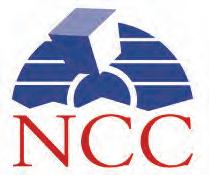
For example, money is committed by Ottawa and designated for specific projects, but delays often halt the process depending on challenges regarding water and energy infrastructure and, at times, jurisdictional overlap between First Nations and the provinces, Hajdu explained.
Take a subdivision in Attawapiskat, Ont.,

ᐳᓛᕆᐊᖅᐸᒡᓗᓯ ᑕᑯᔭᓐᓂᒃ, ᑕᑯᔭᖅᑐᖅᐸᒡᓗᓯ ᐃᓄᖕᓂᒃ ᐃᓄᒋᐊᓗᐊᖅᑐᓂᒃ ᐃᒡᓗᑖᖅᐸᒃᑐᓂᒃ, ᐊᕐᕕᐊᓕᐊᖅᐸᒃᖢᑎᒃ ᖃᑕᙳᑎᒌᓂᒃ ᓴᓇᓯᒪᔪᓂᒃ ᐃᓇᖏᖅᓯᓯᒪᔪᓂᒃ ᓇᓕᐊᖕᓂ ᐃᒡᓗᕈᓯᕐᓂᒃ, ᓄᓇᕗᒻᒥ ᒪᓕᒐᓕᐅᖅᑎᕐᔪᐊᖅ ᓗᐊᕆ ᐃᓪᓚᐅᑦ ᐅᖃᖅᖢᓂ ᐱᕙᓪᓕᐊᔪᓕᕆᔨᓂᒃ ᑲᑎᒪᕐᔪᐊᖅᑐᖃᕐᓂᖓᓂ ᑕᒪᑐᒪᓂ ᑕᖅᑭᒥ.
which would require building on traditional territory that’s currently Crown land owned by Ontario, Hajdu added.
“I agree with the NDP that we have to be thoughtful and that we have to be strategic if we’re going to hit the 2030 goal, but it isn’t just money alone that will close that gap,” Hajdu said.
The NDP’s criticism comes on the heels of the release of the Federal Program Spending on Housing in 2022 report by the parliamentary budget officer. The report notes Ottawa committed more than $89 billion over 10 years starting in the 2018-19 fiscal year as part of its National Housing Strategy.
The report, including Ottawa’s National Housing Strategy, excludes Indigenous-specific programs administered by Indigenous Services Canada and Crown-Indigenous Relations and Northern Affairs Canada.
“Reconciliation should mean action, and one of the areas that require immediate action is housing,” Ashton said.

Sleeping in shifts
In a previous interview, Idlout reiterated the need for a $6-billion investment over two years to address immediate housing needs put forward by the federal government’s National Housing Strategy.
Idlout understands the urgency. Her home territory of Nunavut faces the same housing problems as First Nations across other provinces and territories. Idlout encouraged more people, and specifically Hajdu, to visit homes in Nunavut.
“Go and visit the homes that I see, go and see people living in overcrowded housing situations, visit Arviat who has families who have created shifts for who is going to sleep in which bedrooms,” Idlout said at the press conference.
“Go and visit the homes that I see, go and see people living in overcrowded housing situations, visit Arviat who has families who have created shifts for who is going to sleep in which bedrooms,” Nunavut MP Lori Idlout said during a press conference earlier this month. NNSL file photo

“I hope Minister Hajdu comes to Nunavut and sees the realities I’m seeing.”
Idlout also noted Inuit Tapiriit Kanatami’s pre-budget submission estimates an initial capital investment of $55.3 billion over 10 years.
While it’s unclear if Ottawa’s 2023 budget will increase housing for Indigenous funding, Hajdu said she is “always ambitious” in the space of Indigenous equity.
“It’s simplistic to think there’s an easy answer… but it’s my job to help communities to unlock the tools they need, including financial tools, to move their community forward.”
—By Matteo Cimellaro, Local Journalism Initiative reporter, Canada’s National Observer
Federal ministers send Nunavut diamond mine proposal to environmental review
Federal ministers have agreed with the Nunavut Impact Review Board that a proposal for a new diamond mine in the territory should undergo a public review.
De Beers Canada Inc. is seeking to build its Chidliak diamond mine on the Hall Peninsula of Baffin Island, about 120 kilometres northwest of Iqaluit.
The company says it plans to use a FutureSmart Mining approach to reduce environmental impacts.
The impact review board has highlighted that De Beers
proposes to use new technologies like remote mining and operation of vehicles, as well as a modular nuclear reactor, which it says have not yet been well demonstrated in the Arctic. Several organizations and government departments have expressed concerns about the project’s potential impacts on caribou, polar bears and traditional Inuit harvesting and land use.
In a screening decision in November, the board concluded the proposal requires a full environmental review to assess
potential eco-systemic and socio-economic impacts.
Northern Affairs Minister Dan Vandal and other federal ministers said Tuesday in a letter to the board that they agree.
“I appreciate the work that the board has done in screening the project proposal,” the letter states. “The responsible ministers have the utmost confidence in the board to conduct a rigorous review of the project proposal.”
—By The Canadian Press
Cyberattack on Qulliq Energy Corporation still being investigated
Timeline for restoration of the network currently remains unclear
By Trevor Wright Northern News Services Nunavut
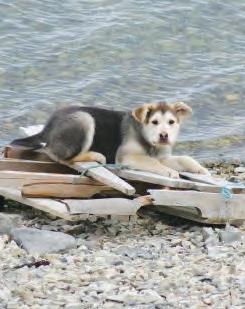
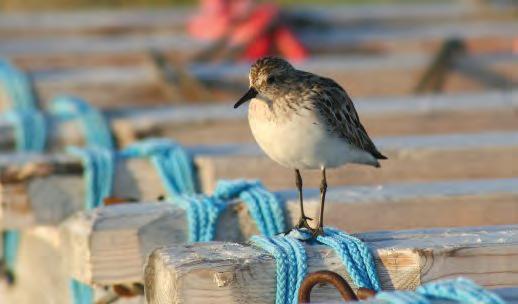
Craig Simailak, minister responsible for the Qulliq Energy Corporation (QEC), said the power corporation is still investigating the Jan. 15 cyberattack on its systems.
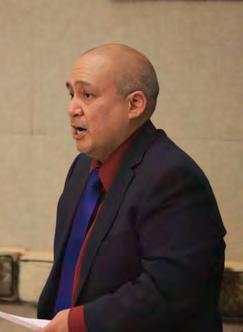
“Currently, the Government of Nunavut and cyber experts continue to work alongside QEC’s IT department to recover, restore and rebuild the information technology network,” Simailak said in an update to the Nunavut Legislative Assembly on Feb. 22. The timeline for restoration of the network currently remains unclear. However, QEC re-
mains committed to the protection and service of its customers, said Simailak.


“At this stage, it is too early to determine if any information may have been compromised,” he added.



Simailak said he appreciates QEC customers for their patience and he committed to communicate progress updates as they become
available.
“Cyber attacks are criminal, and malicious cyber activity has surged in recent years internationally,” he said. “Critical infrastructure and utilities are increasingly targeted, and QEC is taking these threats seriously and using this as an opportunity to upgrade our IT systems.”
SPORTS

Phone:
Nunavut ladies in tough at Scotties Tournament of Hearts




By James McCarthy Northern News Services
Kamloops, B.C.The biggest women’s curling bonspiel in Canada was back in action this month and that meant Nunavut was in on the fun.
The Iqaluit Curling Club provided this year’s rink for the Scotties Tournament
of Hearts in Kamloops, B.C. Brigitte MacPhail and her rink of Sadie Pinksen, Kaitlin MacDonald, Alison Taylor, Leigh Gustafson and coach Donalda Mattie took on some of the best teams from around the country, but failed to find the win column this year.

Here’s some of the action involving Nunavut in Kamloops.
ᓴᐃᑎ ᐱᖕᒃᓴᓐ, ᓴᐅᒥᐊᓂ, ᐊᒻᒪ ᐋᓕᓴᓐ ᑕᐃᓗ ᑕᐅᑐᒃᖢᑎᒃ ᑐᑭᓕᕇᒃᑐᓂᒃ
ᓴᐃᑎ ᐱᖕᒃᓴᓐ ᐅᖃᖅᐳᖅ ᑯᐸᐃᖕᒥᙶᖅᑐᑦ

ᑭᖑᓂᖔᖓᓂ ᑕᐅᑐᒃᖢᓂᒋᑦ.
Sadie Pinksen calls out the line as the opponents from Quebec look on in the background. Curling Canada/Andrew Klaver photo
ᖁᓛᓂ ᑕᑯᒃᓴᐅᔪᖅ ᓴᐃᑎ ᐱᖕᒃᓴᓐ, ᖁᓛᓂ, ᐊᒻᒪ ᐋᓕᓴᓐ

ᐳᕆᒋᑎ ᒪᒡᐱᐅᓪ ᑐᓂᓯᔪᖅ ᓯᐊᕐᕆᔭᐅᑎᑯᑖᒥᒃ ᐱᙳᐊᖅᑎᓪᓗᒋᑦ ᕕᕗᐊᕆ 18-ᒥ. Brigitte MacPhail delivers a skip’s stone during play on Feb. 18. Curling Canada/Andrew Klaver photo
ᓴᐅᒥᐊᓂ, ᐋᓕᓴᓐ ᑕᐃᓗ, ᓴᐃᑎ ᐱᖕᒃᓴᓐ ᐊᒻᒪ ᑲᐃᑦᓕᓐ ᒪᒃᑖᓄᑦ ᐃᒡᓚᑲᑕᒃᑑᒃ ᐃᓱᓕᑉᐸᓪᓕᐊᑎᓪᓗᒋᑦ.
From left, Alison Taylor, Sadie Pinksen and Kaitlin MacDonald share a laugh between ends. Curling Canada/Andrew Klaver photo















